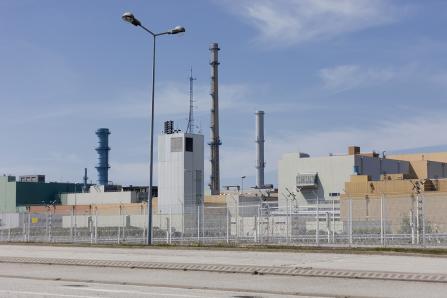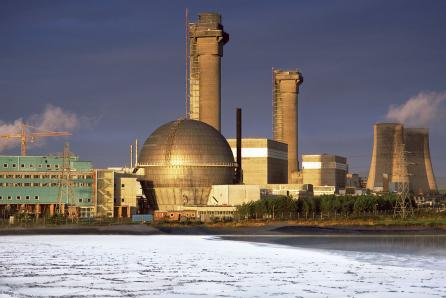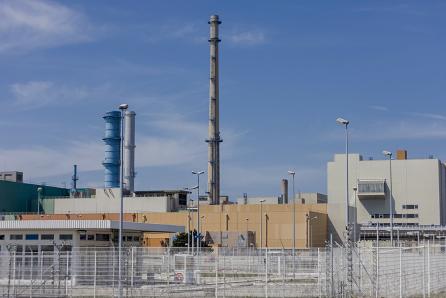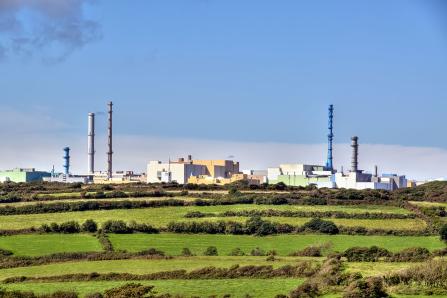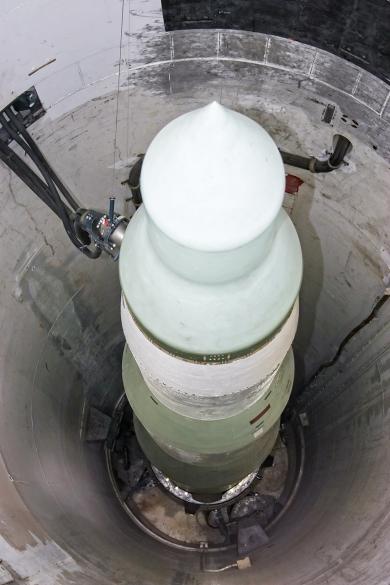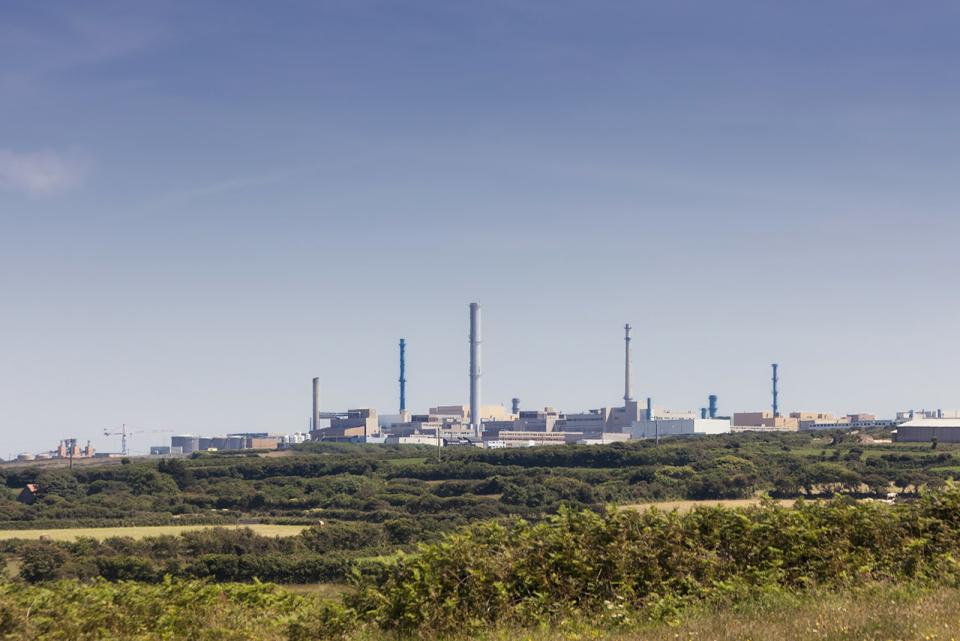
Reprocessing
6 min read
The reprocessing facility in La Hague, France, recycles spent fuel from nuclear reactors from the entire world.
Spent nuclear fuel contains 95.5% uranium (95% 238U and 0.5% 235U), 0.9% plutonium and 3.6% of fission products. The uranium and plutonium may be reused to make fuel and thus, between 1,500 and 2,000 tons of uranium can be saved annually. A side effect of reprocessing is the more concentrated nature of the radioactive waste: 115 kg of vitrified highly radioactive waste is generated by a single ton of spent fuel.
Uranium
Nuclear reprocessing was developed to recover a mixture of uranium isotopes from spent fuel. The most prevalent is 238U as well as less than one percent of 235U. Additionally, there is also the isotope 232U which is a strong gamma radiation source making fuel handling very difficult. However, the 232U undergoes transmutation in the reactor, by neutron capture, into the fissionable 233U. Finally, there is also 0.4—0.6% of 236U that functions as a neutron absorber. This recovered uranium is mixed with fresh uranium and it then undergoes the enrichment process. However, due to the presence of 236U, it must be enriched to 10% to compensate for the neutron absorption caused by this isotope. This fuel can be reprocessed again but due to the increasing concentration of 236U, the reprocessing requirements gradually increase also.
Changed composition of uranium fuel after its irradiation in a nuclear reactor.
Due to the gradual radioactive decay of the spent fuel, there are other non-active elements that might be interesting to the industry in the future — platinum, ruthenium, rhodium, palladium, silver, and other elements.
MOX
Sellafield is the main nuclear center in Great Britain with several reprocessing facilities, a decommissioned nuclear power plant, and many other nuclear facilities.
MOX is an acronym for Mixed OXide fuel and it is a mixture of a uranium oxide and a plutonium oxide (UO2 and PuO2). It is made of plutonium recovered during reprocessing or weapons grade plutonium and it represents about 2% of the current nuclear fuel. It is widely used in Europe and in Japan. In Europe, there are 40 reactors licensed to use MOX (MOX fuel is actually being used by 30 of them) and there are 10 licensed reactors in Japan. MOX represents one-third of a reactor fuel load but this could be increased to one-half for some reactors types.
MOX is produced as a mixture of plutonium and depleted uranium (e.g., waste from reprocessing). Increasing the material’s fissionability is very simply accomplished by increasing the concentration of plutonium. A plutonium content of 7% is equivalent to uranium fuel enriched to 4.5%. If weapons grade plutonium is used (it contains 90% 239Pu which is fissionable), a plutonium concentration of just 5% will suffice to obtain material of the same fissionability.
The French company La Hague and the British company Sellafield produce MOX.
Changed composition of reprocessed MOX fuel after its irradiation in a nuclear reactor.
Plutonium
The spent fuel reprocessing facility in La Hague is one of the most closely monitored and secured nuclear facilities.
Recovered plutonium also contains a mixture of isotopes. The ratio of non-fissionable isotopes depends on the degree of burn-up, i.e., how long the plutonium remained in the reactor. The fissionable isotopes 239Pu and 241Pu make up two-thirds of the recovered plutonium. About 70 tons of plutonium is recovered annually. Plutonium must be immediately used to make nuclear fuel and loaded into a reactor core. Otherwise, the 241Pu disintegrates (its half-life is 14 years) and the amount of americium 241Am, a strong gamma radiation source, increases which would make fuel handling more difficult. Plutonium is used mostly in a mixture with uranium such as MOX. Plutonium may be recovered only twice because the isotope mix changes unfavorably.
Plutonium reprocessing increases the amount of energy gained from the original uranium by 12% and by 22% if the uranium is also separated.
Contrast of the countryside scenery and the World’s largest nuclear fuel reprocessing facilities in La Hague, France.
Reprocessing Method
The majority of the reprocessing facilities use the PUREX (plutonium and uranium reduction and extraction) method. The fuel rods are removed from the fuel bundles by remote manipulators, cut to pieces, and dissolved in hot nitric acid. The uranium and plutonium is then chemically extracted and processed.
There are reprocessing facilities in France, Great Britain, Russia, Japan, and India. The total capacity of these facilities is about 25% of the spent fuel from all the world power plants. Around 4,000 tons of spent fuel is processed annually.
Decommissioned warheads are a source of weapons-grade plutonium that is used, together with depleted uranium, in reprocessing facilities to produce fuel for the MOX reactors.
After reprocessing, the nitric acid containing the dissolved fission products remains as a byproduct. It is thickened, mixed with glass-forming additives, and melted into borosilicate glass in a process known as vitrification. This highly radioactive glass is then stored as waste. The party who ordered the reprocessing is contractually responsible for this waste.
The first reprocessing facilities were constructed in order to produce weapons grade plutonium.



